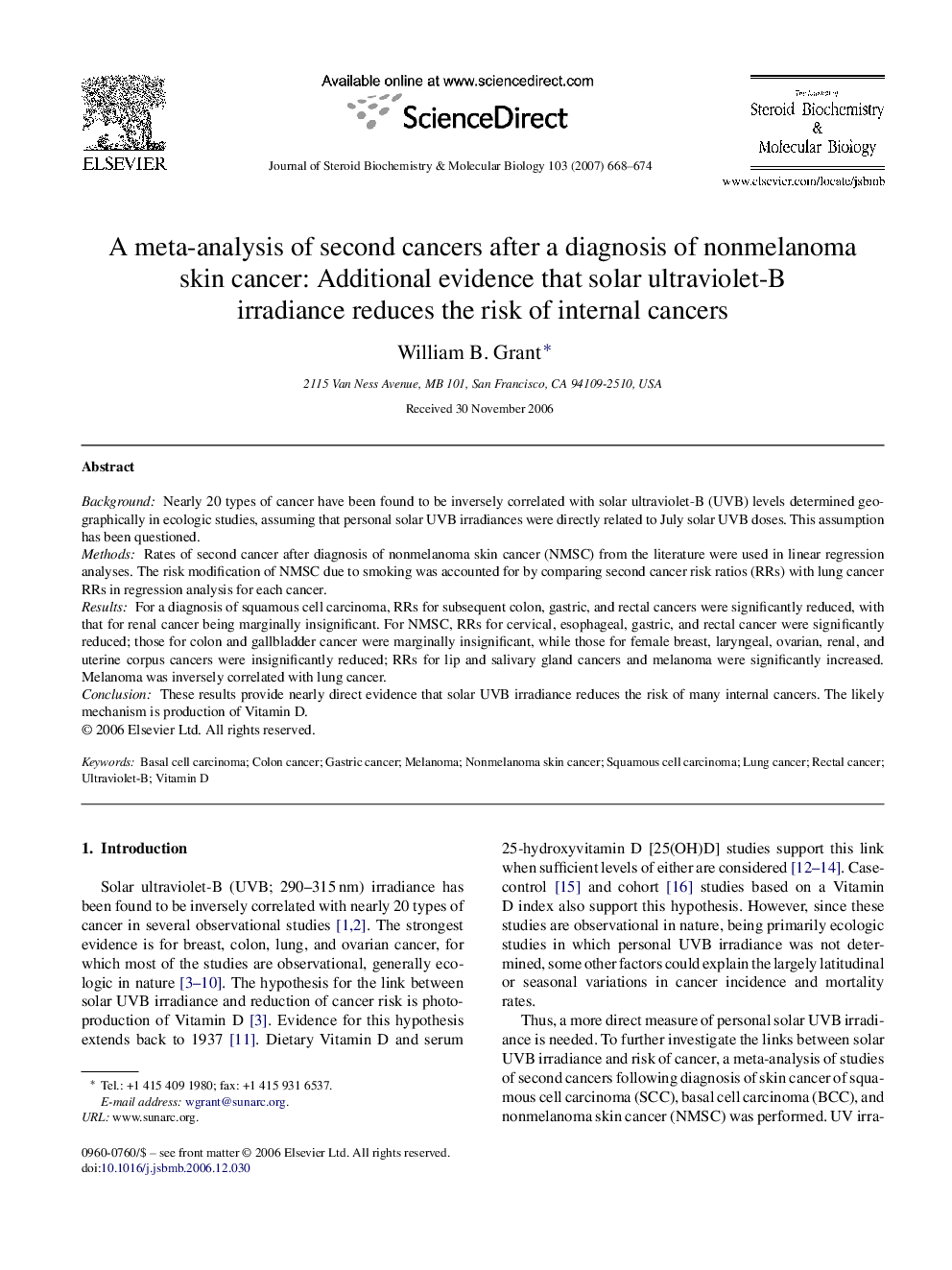| Article ID | Journal | Published Year | Pages | File Type |
|---|---|---|---|---|
| 1992604 | The Journal of Steroid Biochemistry and Molecular Biology | 2007 | 7 Pages |
BackgroundNearly 20 types of cancer have been found to be inversely correlated with solar ultraviolet-B (UVB) levels determined geographically in ecologic studies, assuming that personal solar UVB irradiances were directly related to July solar UVB doses. This assumption has been questioned.MethodsRates of second cancer after diagnosis of nonmelanoma skin cancer (NMSC) from the literature were used in linear regression analyses. The risk modification of NMSC due to smoking was accounted for by comparing second cancer risk ratios (RRs) with lung cancer RRs in regression analysis for each cancer.ResultsFor a diagnosis of squamous cell carcinoma, RRs for subsequent colon, gastric, and rectal cancers were significantly reduced, with that for renal cancer being marginally insignificant. For NMSC, RRs for cervical, esophageal, gastric, and rectal cancer were significantly reduced; those for colon and gallbladder cancer were marginally insignificant, while those for female breast, laryngeal, ovarian, renal, and uterine corpus cancers were insignificantly reduced; RRs for lip and salivary gland cancers and melanoma were significantly increased. Melanoma was inversely correlated with lung cancer.ConclusionThese results provide nearly direct evidence that solar UVB irradiance reduces the risk of many internal cancers. The likely mechanism is production of Vitamin D.
